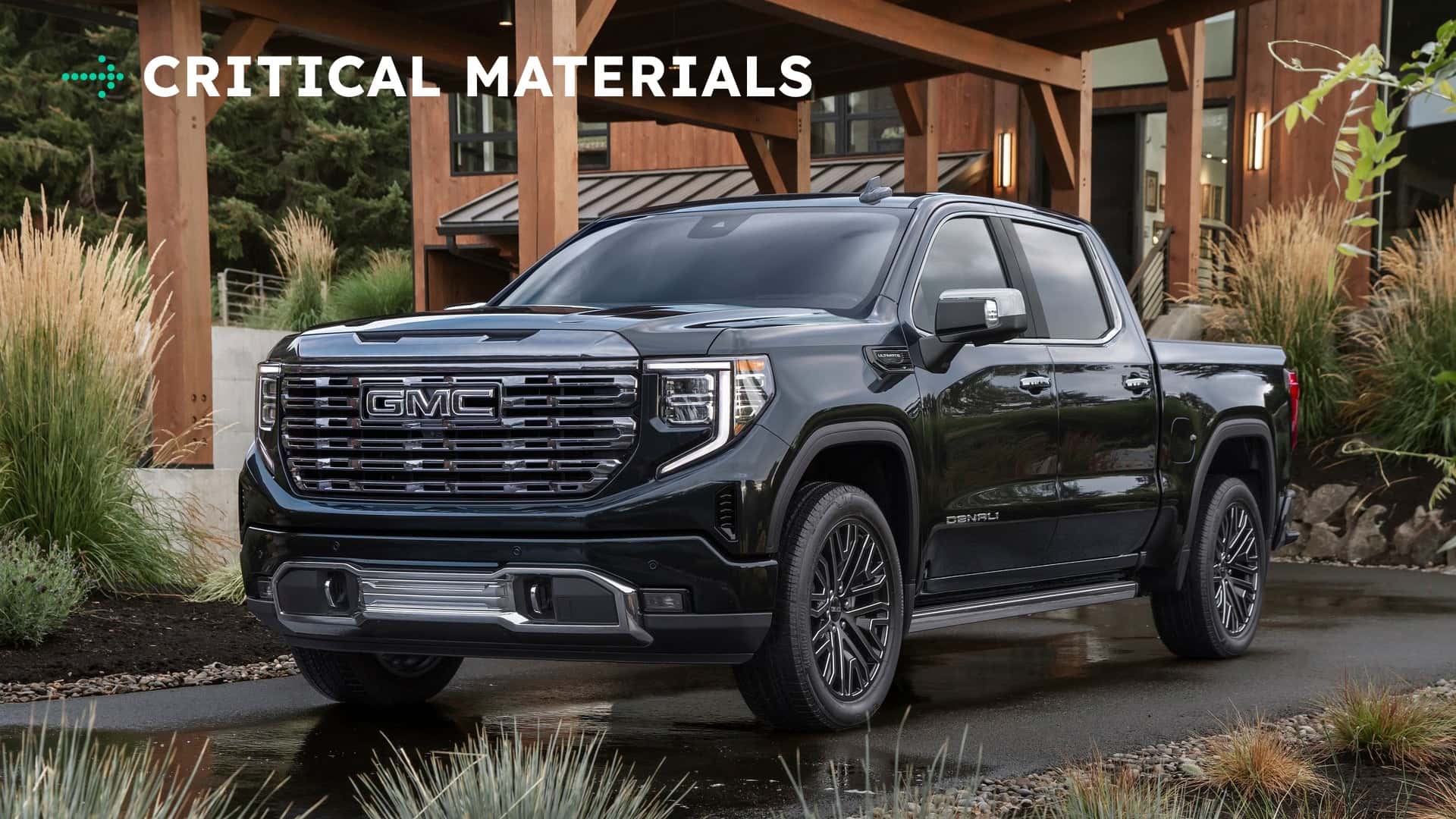
Things haven’t been looking all that great in electric vehicle world for a while now, but I promise that my job here isn’t to be the resident doom-and-gloom writer at InsideEVs. Today’s news may look somewhat negative on one hand, but I think there’s a silver lining in each of the stories we’ve got today, even if they’re caused by some disappointing changes in policy.
Howdy, y’all. It’s another day in the plug-in vehicle world, and it looks like the market is gearing up to take the brunt of the changes brought on by the U.S. government’s removal of the EV tax credits. But, while our used and new car markets are bracing for impact, across the world the shift to plug-in vehicles surges on.
Welcome back to Critical Materials, your source for some of the biggest stories of the day in the EV world.
30%: GM Pivots to Making Gas Trucks At An EV Factory
We’ve reported on this before, but now it’s confirmed: GM’s officially pivoting to making internal-combustion trucks at a factory once earmarked for EV production. The Orion Assembly plant in Orion Township, Michigan, has been home to many cars at different points of its life. Once, it even made the Chevrolet Bolt EUV, only for that model to be discontinued so GM could retool the plant to make electric pickup trucks. GM planned to invest $4 billion in the facility so it could make the Chevy Silverado EV and GMC Sierra EV there starting in 2026.
Not anymore, says the Detroit Free Press.
GM will begin production of the Cadillac Escalade, as well as the Chevrolet Silverado and GMC Sierra light-duty pickups at Orion Assembly in early 2027 to help meet continued strong customer demand,” GM spokeswoman Tara Kuhnen said. “GM is proud to call Michigan home, and these moves will further strengthen our manufacturing footprint.
This could end up being a future point of contention for GM. According to the Detroit Free Press, the state of Michigan awarded $480 million worth of grant money explicitly meant for EV production. It’s not clear if the state will want that back.
Regardless, GM insists that this is a strategic move that is for the health of the company, as its large gas-powered trucks and SUVs are consistently strong sellers. The full rundown at the Detroit Free Press paints a great picture as to just how complicated GM’s EV manufacturing efforts have been.
GM still remains on track to continue selling EVs, though. The company just made a massive investment into manufacturing lithium-iron-phosphate batteries in the U.S., and it's pushing hard into lithium-manganese-rich chemistry as well. Its EV sales are growing quickly. But the company still sees a significant future for its gas-powered vehicles, clearly, and says it's adjusting to consumer demand.
60%: Plug-in Vehicles Surge Globally

Research firm Rho Motion just released the results of its study of EV and plug-in hybrid (PHEV) adoption for the globe. And, well, it confirms things we already knew here at InsideEVs—the switch is inevitable. Compared to one year ago, adoption of any model with a plug is up by a whopping 24%. Even compared to a month prior, global EV/PHEV markets grew cumulatively by a stunning 7%.
It’s not all good news, though. While growth is strong in markets like Latin America, North America is somewhat flat, with Canada really dragging the whole continent down.
Growth in the North American EV market (US, Canada, and Mexico) continues to slow down, with 3% growth now ytd. The Canadian market remains down at -23%, the Mexican market is up at 20%, and the U.S. market has grown by 6%.
Following President Trump signing the ‘Big Beautiful Bill’ into law on 4 July 2025, all IRA consumer tax credits for new, used, and commercial EVs are withdrawn and will be terminated on 30th September 2025. Just over half of EVs sold in the U.S. this year have been eligible for the tax credit. We therefore expect a rise in EV sales before the elimination of the tax credit at the end of Q3, and then a sharp decline in demand in the final quarter of the year.
Although this isn’t great news for the U.S. and Canada (which will likely continue to shrink as subsidies evaporate), these numbers do support a hunch of mine regarding gains in Latin America. I think that's caused by the availability of affordable Chinese EVs and PHEVs. Cheap cars like the BYD Seagull are readily available in markets like Mexico or the Philippines. Just like in China, these cars are often priced right against foreign ICE-powered competition. The BYD Seagull (called the Dolphin Mini in some markets) may not be $8,000 in Mexico like it is in China, but its roughly $20,000 price is still relatively affordable for many, many markets.
It’s kind of a no-brainer that people in those markets are making the switch.
90%: Used EV Prices Are Falling, Still

The latest study on the EV market from iSeeCars has been published, and it’s not looking great. That is, unless you’re in the market for a used EV. Prices on those are continuing to fall, by about 5% compared to last year. By comparison, the pricing on combustion vehicles has risen by about the same amount. So, EVs are becoming a relative bargain. Woo-hoo, right?
Erm, it looks like this comes alongside some bad news, though. Sinking resale values are a result of the growing stock of used EVs. But the flow of lightly-used EVs onto the secondhand market has dropped in the last year.
Here's iSeeCars, and its executive analyst Karl Brauer, for more on that:
Predictions that electric vehicles would make up between 20% and 50% of new vehicle sales by 2030 were common just a few years ago. But new EV market share has stalled at 6.9%, and even declined over the past 12 months, according to Cox Automotive. Most EVs cost more than their gasoline equivalent when new, limiting demand even with the $7,500 incentive.
iSeeCars looked at the 1- to 5-year-old used car market to see how much EV share has grown since 2020. Between 2021 and 2024 the presence of EVs grew between 60.5% and 97.3% every year. But in the last 12 months the EV growth rate dropped to just 14.2%, indicating a marked slowdown in the number of new EVs feeding into the used market.
“This is a lagging indicator, and of course it doesn’t include the impact of federal incentives being removed on September 30,” said Brauer. “What will market share growth for 1- to 5-year-old used EVs be in June of 2026? Will there even be growth? Will it contract?”
Another thing to keep in mind: The EV leasing boom of the last few years will lead to a flood of used electric cars. So the deals may last.
100%: The Tax Credit Is Ending. What now?
We’ve got about three months or so until the EV tax credit is gone. Personally, I think it's time for me to get off the pot, so to speak, and really get serious about replacing my Mitsubishi i-MiEV. Howabout you? Are you doing a last-minute cash-in on a new or used EV before the tax credit expires?
Contact the author: Kevin.Williams@InsideEVs.com







